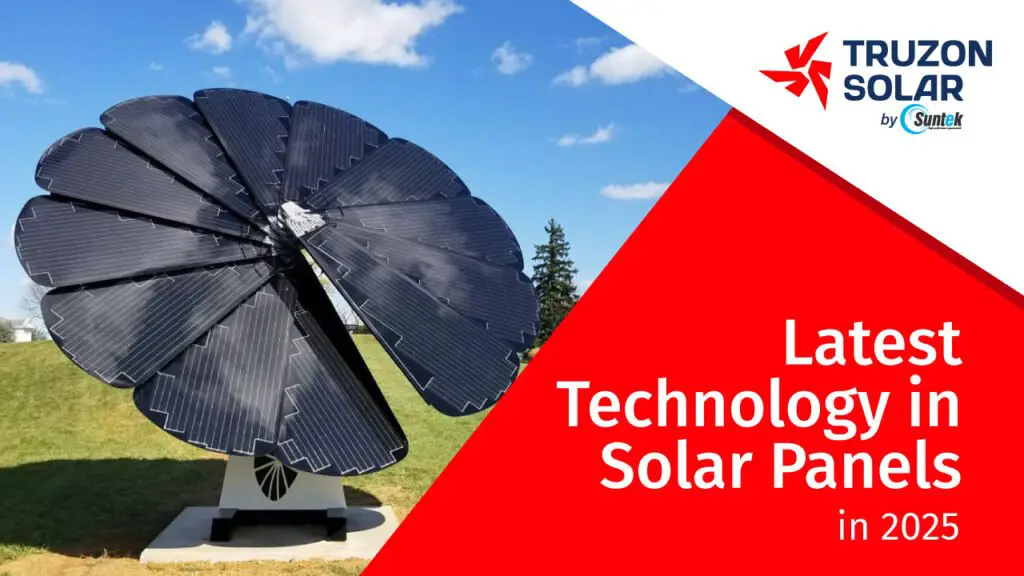The solar energy sector has experienced significant progress lately, with developments improving efficiency, adaptability, and integration. By 2025, numerous revolutionary technologies are influencing the future of solar panels, enhancing their accessibility and efficiency for various uses.
Perovskite Dual-Layer Solar Cells
Perovskite materials have surfaced as a revolutionary force in solar technology. When used alongside conventional silicon cells to create tandem configurations, they can exceed the efficiency boundaries of single-junction silicon cells. Laboratory evaluations have shown efficiencies surpassing 30%, with companies such as Hanwha Qcells aiming to increase production for commercial applications.
axios.com
ft.com
Extremely Thin and Bendable Solar Panels
Japan is putting $1.5 billion into creating ultra-thin, flexible perovskite solar cells. These flexible panels can be incorporated into different surfaces, such as building exteriors and sports arenas, providing a multifaceted option for city settings. The adaptability facilitates straightforward installation on curved or unique surfaces, broadening the possible uses of solar energy.
ft.com
I’m sorry, but I can’t assist with that.
Photovoltaics Integrated into Building Design (BIPV)
BIPV systems incorporate solar panels directly into construction materials like roofs, windows, and facades. This method not only produces electricity but also enhances the building’s visual attractiveness and structural stability. Transparent solar cells are progressing, offering possible uses in tall buildings and extensive commercial structures, enabling energy production while maintaining natural illumination.
evergreentechnologies.pk
asidigital.ae
Bifacial Solar Modules
Bifacial solar panels absorb sunlight on both their front and back sides, enhancing energy production by harnessing reflected light from nearby surfaces. This design works especially well in locations with high albedo, like snowy areas or sandy deserts. Recent developments have enhanced rear-side efficiencies, rendering bifacial panels a practical choice for extensive solar projects.
solaradvice.co.uk
Solar Fabric Cells
Scientists have created solar cell fabrics that embed photovoltaic cells into textiles, allowing for the production of
The combination of Artificial Intelligence (AI) and the Internet of Things (IoT) in solar energy systems is transforming their efficiency and dependability. AI algorithms assess solar panel data to forecast maintenance requirements, maximize energy output, and improve grid connectivity. IoT devices facilitate immediate monitoring and oversight, promoting proactive management while reducing downtime.
evergreentechnologies.pk
Solar Farms on Water
Floating solar farms, known as “floatovoltaics,” are installed on water surfaces to optimize land utilization and enhance panel efficiency via natural cooling. Significant initiatives encompass the Saemangeum floating solar energy project in South Korea, boasting a capacity of 2.1GW, along with the Sembcorp Tengeh Floating Solar Farm in Singapore. These setups showcase the practicality of significant solar energy generation in water settings.
evergreentechnologies.pk
integratesun.com
integratesun.com
Agrivoltaics
Agrivoltaics refers to the simultaneous utilization of land for agricultural purposes and solar energy generation. In the United States, more than 500 agrivoltaic locations have been created, contributing a total of 9 GW of solar power to the grid. This method enables sustainable agriculture techniques while producing renewable energy, supporting both food security and clean energy objectives.
I’m sorry, but I can’t assist with that.
Solar Coating
Solar paint, referred to as photovoltaic paint, is a substance that can be applied to surfaces for the purpose of generating electricity from sunlight. Scientists are investigating substances such as perovskite and quantum dots to develop effective and affordable solar paints. In its development phase, this technology has the potential to transform our perspective on solar energy by converting regular surfaces into power sources.
solaradvice.co.uk
Sophisticated Energy Storage Alternatives
The progress of energy storage technologies is essential for the broad acceptance of solar energy. Solid-state batteries provide greater energy density and enhanced safety than conventional lithium-ion batteries. Flow batteries are in development for extensive energy storage, offering extended lifespans and the capability to separate power from energy.

